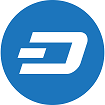Overview
Type: ERC20
Token Symbol: PRL
Idea: The Oyster network is a decentralised cloud storage platform the processing needed to run it is sourced from website visitors. A mining script hosted on websites will use a fraction of the user’s computing power to process transactions on the Oyster.ws network.
Oyster.ws Opportunities
- One PRL token is pegged to the value of one GB of storage for one year.
- The Oyster protocol makes intelligent use of user’s CPU power by using it to process transactions on the Oyster block chain (IOTA tangle) to pay content providers.
- It is impossible / very difficult to find out who paid to store content; this feature is attractive to those who do not want to be associated with uploaded content
- Oyster have a clear structure to the ICO process, a strong competitor to Oyster – EOS doesn’t. (EOS claims that they will not launch the protocol themselves once the ICO is over)
Oyster.ws Concerns
- Ad blockers could eventually block the Oyster mining script.
Oyster.ws replies “This is okay for the system, even better than that there is a consent notice like for cookies and an opt-out button. Oyster doesn’t directly manage the disputes between content providers and content consumers, but instead provides tools of leverage for each party to use. A website can implement advanced content access policies to make sure they are meeting the minimum revenue requirements. For example, a website can set content to become blocked or advertisements to activate if more than 50% of the mining scripts have been disabled.” - If one PRL token is the pegged to the value of one GB of storage for one year and the price of PRLs falls below the hardware and hosting costs, then it could be that broker nodes start to go offline.
- Oyster has some mature competitors which offer similar services
- Paid for decentralised storage in this area which have a first move advantage such as storj.io/, ByteBall, SiaCoin, I/O Digital
- Free decentralised storage such as torrent, Centralised and free hosting such as google drive and onedrive.
- Oyster needs to compete on both price, functionality and stability for users to shift from established services to Oyster.
- EOS, a new crypto project will have a market based approach to pricing cloud computing and storage. The combination of these two factors allow for a combined utility greater than if only storage was offered.
- The anonymous facility of Oyster could irk law enforcement agencies. For example, illegal images or videos would be easily be hosted on this platform and criminal action could be taken against broker nodes. This issue is common to all anonymous decentralised and centralised storage solutions.
- The developer’s fund is fixed. 15% of the ICO proceeds will go into this fund. There is no mechanism to replenish this fund.
- PRL tokens are limited to 500,000,000 GB or 500,000 terabytes given the use of big data in the future, this can be a limiting factor in the growth of PRL token.
Oyster.ws replies “We are currently finalizing the details of a director smart contract that can control the storage peg by invoking functions of the main token contract. The design causes the storage peg to double when half of the remaining PRL supply has become locked for storage purposes. This means the inherit value of the PRL token increases as more storage is used on the network. It also means that the aggregate storage capacity scales infinitely.”
Recap
The Oyster protocol has a lot of competition from other crypto and non-crypto projects it needs to offer something more than these projects to create demand for PRL tokens. Its success is a delicate balance between on the one hand the price of one PRL token and on the other the actual cost of that storage and bandwidth.












